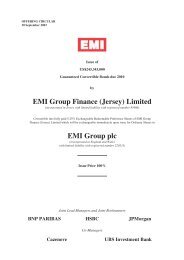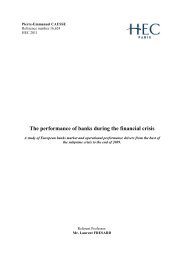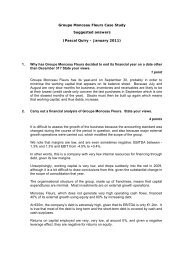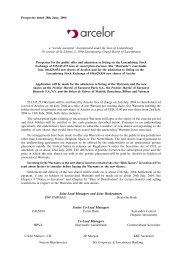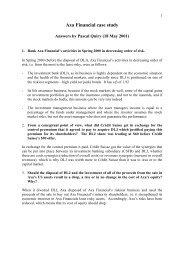Thesis_gd_final_vers.. - Vernimmen
Thesis_gd_final_vers.. - Vernimmen
Thesis_gd_final_vers.. - Vernimmen
Create successful ePaper yourself
Turn your PDF publications into a flip-book with our unique Google optimized e-Paper software.
i) Technological changes in the banking industry: an historical perspective<br />
Technological changes which impacted the commercial banking industry can be divided into two<br />
categories: financial innovations such as credit scoring or new products such as derivatives and<br />
asset-backed securities, and information technology-related changes such as the development of<br />
internet-banking, ATMs, electronic means of payment (credit and debit cards). However most of<br />
the financial innovations of the three last decades have been made possible because of the<br />
progress of compilation and computation technologies. They made possible the development of<br />
new products, risk-management tools and regulatory frameworks (Basle I, Basle II) because they<br />
made technically possible to perform heavy calculations and run complex statistical models and<br />
they lowered both information processing time and information processing costs. The ratio of<br />
computers and software to value added reveals that banking is the most IT-intensive industry in<br />
the United States.<br />
A first decisive innovation was the apparition of the automated-teller machine (ATM) in<br />
the 1960s and 1970s. Initially banks thought that ATMs would be substitutes for human tellers.<br />
However, data from the FDIC and Bank Network News annual Data Book reported by DeYoung<br />
et al. (2004) show that both the number of ATMs and of bank branches has been increasing<br />
overtime. It suggests that ATMs and branches with employees have complemented rather than<br />
cannibalized each other.<br />
The 1980s saw the development of additional major financial and technical innovations. The<br />
computers increased information processing capacities as well as the reduced cost and time of<br />
information transfer were instrumental in the apparition and the development of new financial<br />
markets such as options, futures, swaps on interest rates, stock indexes and other financial assets.<br />
At the same time they allowed existing financial markets to function more efficiently thanks to the<br />
development of electronic platforms to match orders on existing exchanges. Moreover, new<br />
technology was a key factor in the development of securitization and asset-backed securities, even<br />
though deregulation played an important role too. Indeed, the development of information<br />
technology made easier the computation and dissemination of information concerning the<br />
performance and the operation of the asset pools. We will look more in details at the<br />
consequences of the boom of securitization in the next subsection.<br />
Technology has also had a dramatic impact on consumer and small-business lending.<br />
Introduced for the first time in the 1950s, credit scoring has spread from consumer and real estate<br />
loans in the 1980s to small business lending in the 1990s. While it has been used by most banks<br />
for consumer loans and mortgages, credit scoring has also been used mostly by large banks for<br />
small business lending, whereas small banks rather tend to emphasize soft (non-quantifiable)<br />
information and relationship lending. According to the Federal Reserve’s 1996 Senior Loan<br />
- 12 -



